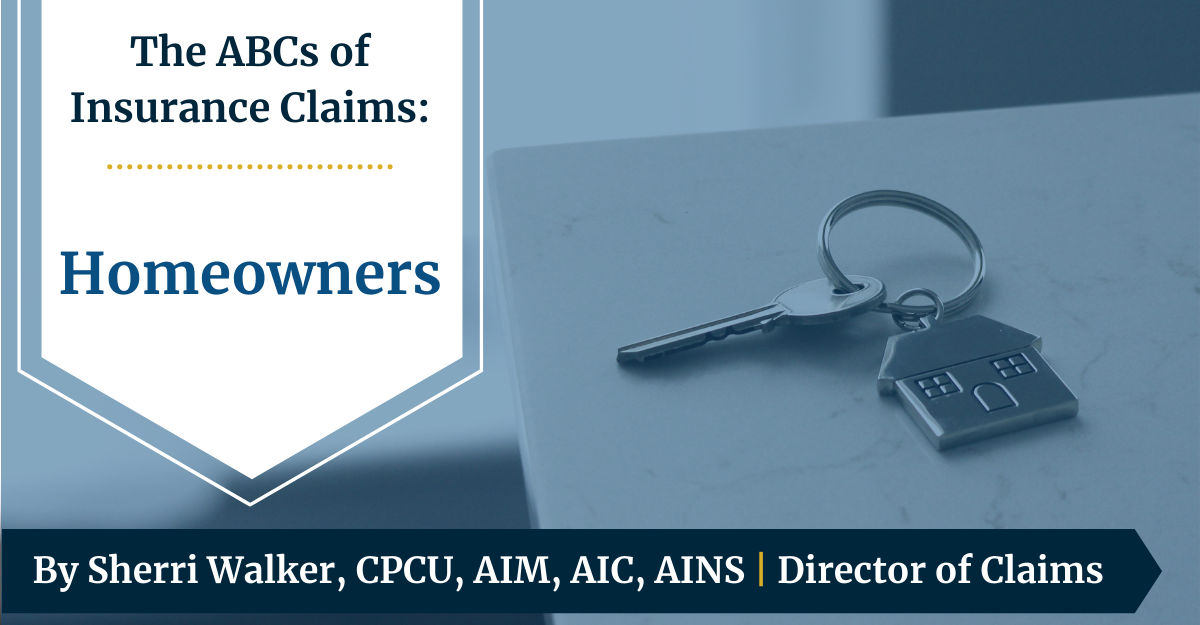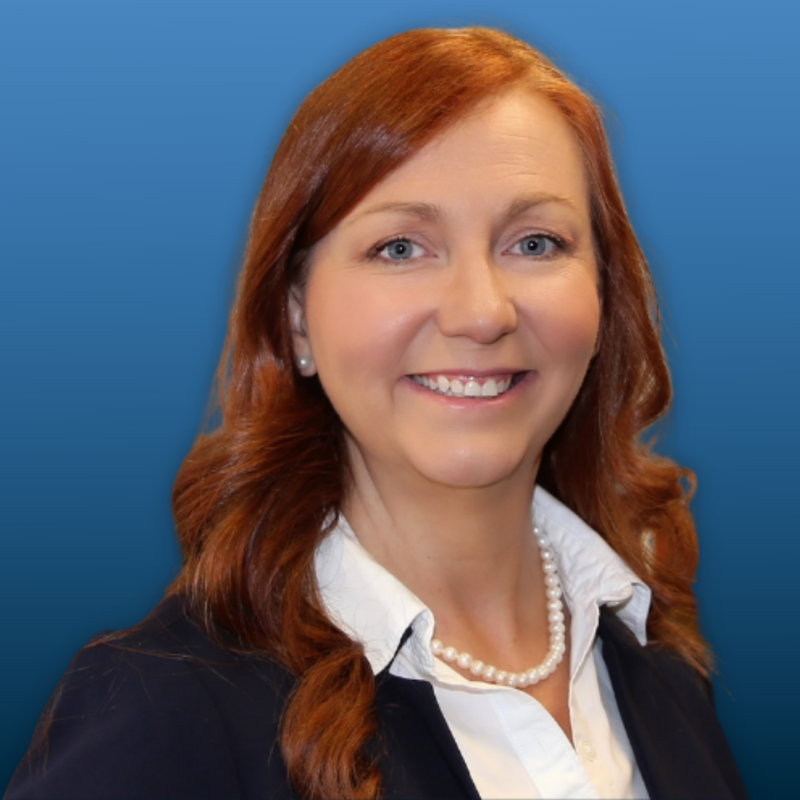Welcome to the ABCs of Insurance Claims. Over the next few months, Sherri Walker, Sentinel’s Director of Claims will address an aspect of claims handling for every letter of the alphabet to help provide a better understanding of the claims process.
Homeowners Coverage
For most of us, Homeowners Insurance is an additional line-item expense on our monthly mortgage statement, and we just hope against hope that we never need it. Everyone knows that mortgage companies require homeowners coverage to secure the loan, but we often just trust that whatever is required by the mortgage company is the right coverage for whatever befalls our homes. This policy may seem overwhelming but learning how to decipher your Declaration page is the best first step in understanding your coverages.
Section I (1) Homeowners Coverages
Section I of your Homeowners Policy is typically broken down into four lines of coverage, also referred to as Coverage A, B, C, and D.
COVERAGE A
Coverage A is also known as Dwelling or Structure coverage. This coverage applies to the actual building, as well as items that are permanently attached, such as floor coverings and light fixtures. It also includes large appliances that you would sell as part of your home, such as the stove, dishwasher and refrigerator.
The amount of this coverage is generally based on the current cost per square foot that it would take to replace/rebuild with the like kind and quality materials. It is important to note that Replacement Cost of the structure can vary widely from the Tax Value or Market Value of the structure.
Coverage A may vary from year to year based on the cost and availability of construction materials and labor. It is imperative that this limit be re-evaluated at each renewal to ensure limit adequacy. If you haven’t connected with your insurance representative to specifically discuss this limit at a recent renewal, chances are it would be inaccurate in the event of a total loss.
COVERAGE B
Coverage B is often referred to as “Other Structures” or “Appurtenant Structures.” This coverage applies to such structures as outbuildings, barns, sheds, and detached garages, as well as fences. This coverage is automatically included at 20% of your Coverage A limit, regardless of whether you even have any of those structures. If you have structures that are worth more than 20% of that limit, additional coverage can be endorsed to raise the appropriate limit of coverage.
COVERAGE C
Coverage C is for your Personal Property. This coverage is for the personal items that you would take with you if you were to sell your house – furniture, art, clothing, jewelry and all the other “stuff” that we keep in our homes. This coverage is typically written at 70% of the Coverage A limit, but it’s important to know that there are some stipulations included.
In the event of a theft or mysterious disappearance loss, there are sublimits on specific categories of belongings, such as money and securities, jewelry and furs, firearms, and silverware. These items can quickly exceed the policy sublimits, and it’s advisable to consider scheduling these items to an Inland Marine policy where they are covered for a specific value to ensure you don’t lose out significantly if those items are lost or stolen. Most policies will cover your Personal Property anywhere in the world, so if you are traveling and a covered loss occurs to your luggage or effects, coverage could apply.
Over the years of working claims, I’ve had homeowners express that they don’t need the full 70% value that’s assigned and feel like they are being over-insured for their belongings. While that amount may seem substantial, there are many items in our homes that we don’t think about needing to replace – down to such items as lightbulbs, undergarments, food, and toiletries if a total loss house fire occurs. While these are little things, replacing everything in the home becomes extremely costly very quickly.
COVERAGE D
Coverage D is Additional Living Expense. If you unable to occupy the home after a covered loss, this limit covers the additional living expenses incurred to continue as nearly as possible the normal standard of living up to a stated limit, such as the reimbursement of a hotel or long-term rental.
Other expenses may include the difference above your normal grocery costs to order take-out due to your kitchen being under restoration, or an expense incurred to board your pets. Even such items as increased power bills due to drying equipment during water mitigation may apply.
Additionally, some carriers will include Mortgage Expense coverage, so if you displaced from your home for longer than a month, your policy would pay the cost of your primary mortgage during that period of restoration
Section II (2) Homeowners Coverages
Section II of your Homeowners Policy responds to third parties and protects you in the event that someone is injured, or their property damaged as a result of your negligence. This section is broken down into two coverage areas, Personal Liability and Medical Expense.
PERSONAL LIABILITY
Personal Liability protects you if you become liable to another party. For instance, an invited guest to your property falls on your stairs and breaks their arm. If you have a loose step that you’ve just not quite gotten around to fixing, you could be liable for that guest’s injuries. This coverage would react accordingly to attempt to settle the matter and provide you a defense in the event you were sued.
Personal Liability coverage protects you regardless of where you are in the world. You could be visiting your brother in France, and after a few cocktails fall through a pool cover of his closed swimming pool. This coverage could assist in paying for the damage to his property. It is important to note that this coverage is only available for acts that you are deemed as negligent. Stay tuned for further discussions regarding Negligence in an upcoming blog.
MEDICAL EXPENSE
Medical Expense coverage differs from Personal Liability in that it applies regardless of whether negligence is found. In the prior example, if the guest to your property was carrying a large bag and simply lost their balance on the stairs, negligence may not exist.
In that instance, Personal Liability coverage would not apply, but your Medical Expense coverage could cover their medical bills up to the limit of your coverage, which is typically $5,000 or $10,000. This coverage only reimburses incurred medical expenses, and there is no payment for elements such as “pain and suffering.” It is worth noting that this coverage does not apply to anyone who is considered an “Insured” such as a member of the household.
Sentinel Is Here To Help
Even armed with the basic understanding of what each of these coverages provides, there are many nuances and intricacies to your Homeowners Policy. In addition, policies can be endorsed to provide broader coverages or increased limits to properly insure your individual exposures. At Sentinel, our experienced team of Private Client professionals can help you navigate the insurance maze and protect what matters the most. Contact Sentinel today to Safeguard Your Success.


